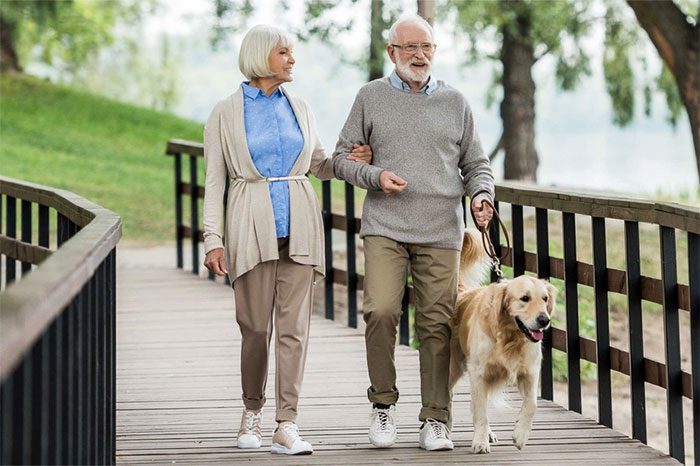The saying “no pain, no gain” is a myth. You can simply walk, cycle, or jog lightly to burn fat and improve your health.

You don’t need to push yourself to the limit; just engage in light exercises like jogging, cycling, or walking. (Photo: Shutterstock).
Zone 2 training includes: light jogging, cycling, or even walking, all of which can effectively burn fat, enhance cardiovascular health, and improve quality of life.
If you’re used to beginner-level workouts but not ready for high-intensity training, Zone 2 exercises are an ideal choice.

Despite being light, Zone 2 training significantly benefits our health and longevity. (Photo: Didarticles).
Dr. Andrew Huberman and Dr. Peter Attia are influential content creators in the U.S. who specialize in health-related podcasts. Through their shows, thousands of listeners have become familiar with Zone 2 training.
Mr. Huberman shared on his podcast: “Engaging in Zone 2 exercises for 180-200 minutes per week has a tremendous impact on longevity and overall health.”
Zone 2 exercises have been shown to reduce the risk of type 2 diabetes, dementia, stroke, and heart disease.
What is Zone 2 Training?
Professor Thomas Roberts, a health advisor at Bupa Health Clinics, told Cosmopolitan UK: “The five heart rate zones are classified based on exercise intensity.”
Zone 2 training is when you exercise without overexerting yourself. Omar Mansour, a fitness coach at WithU, explained to Live Science: “Zone 2 includes light exercises that elevate your heart rate to 60-70% of its maximum. In this zone, your body burns fat more than carbohydrates.”
As you increase the intensity and move into Zone 3, your body will burn carbohydrates and fats at a 50-50 ratio. This state is suitable for those looking to build muscle and improve endurance. Training in Zone 3 and above puts more strain on the heart, lungs, and muscles, requiring rest for recovery. Signs of moving into higher zones include shortness of breath, rapid breathing, or gasping.

In Zone 2, you engage in moderate physical activity without reaching exhaustion. (Photo: Paintedroads).
Zone 2 training positively impacts metabolism, improves blood sugar levels, and reduces insulin resistance. This is because Zone 2 creates a boosting effect on the mitochondria of cells. Mitochondria generate energy for all human actions. When mitochondria function effectively, the body metabolizes fuel into energy more efficiently, enhancing strength and health.
Dr. Richard Blagrove, a senior lecturer in Physiology at Loughborough University, stated: “Zone 2 training is very beneficial for health and performance. I feel comfortable being able to sit on a stationary bike and read for an hour.”
He noted that elite athletes often train in Zone 2 for 90% of their workouts. This regimen provides them a solid foundation before ramping up intensity for competitions later in the year.
Andy Turner, a former professional cyclist and fitness coach at ATP Performance, reported losing 24 kg thanks to this training method.
He said: “Zone 2 helps burn fat more effectively and balances blood sugar levels. Other aerobic exercises are sometimes overlooked. It’s time for everyone to add high-intensity interval training (HIIT) to their routines.”

In Zone 2, the body burns more fat than in other zones. This regimen also improves insulin resistance, common in diabetes and obesity. (Photo: Healthline).
You cannot perform HIIT every day due to its risks. Your body needs at least 48 hours to recover after a HIIT session. This remains true even as you age. Meanwhile, Zone 2 training offers sustainable benefits.
The ideal choice is to combine three Zone 2 workouts and two HIIT sessions in a week.
How to Know if You’re in Zone 2
If you’re in Zone 2, you can still hold a normal conversation while exercising. For example, if you need to call someone during your Zone 2 workout, you can still form complex sentences, not just urgent phrases like “Help!” or “Taxi!”.

If you can comfortably chat while exercising, it indicates you’re in Zone 2. (Photo: vox).
The level of activity that shifts your body into Zone 2 will depend on individual fitness levels. For sedentary individuals, moving around the house or doing household chores can be a Zone 2 workout. The key is to maintain this exercise state without transitioning into higher-stress zones.
Each session must be performed for a specific duration to be effective. Experts recommend exercising for 60-90 minutes. You need to work out for at least 45 minutes to fully experience the benefits of Zone 2.
However, it can be challenging to monitor your exertion during such long workouts. Phil Hilton, a fitness journalist, tried walking around London’s Hampstead Heath for 60 minutes on a clear afternoon. He found that neither boredom nor the sight of majestic hills compelled him to exert more effort while walking.
If the idea of a meditative run doesn’t appeal to you, consider setting your stationary bike to a moderate speed while watching your favorite movie or reading a book.
Common Misconceptions About Exercising
People often mistakenly believe that every moment of exercise must be filled with discomfort. This perception makes us view workouts as a form of torture, a penance for modern life. While jogging in Zone 2, Phil Hilton felt lazy and that his pride was being shattered. Whenever someone passed by, he wanted to tell them he could run faster than this.
Zone 2 allows you to abandon the obsession that you must always strive to do your best. But once you achieve that, life becomes much more peaceful and enjoyable.



















































